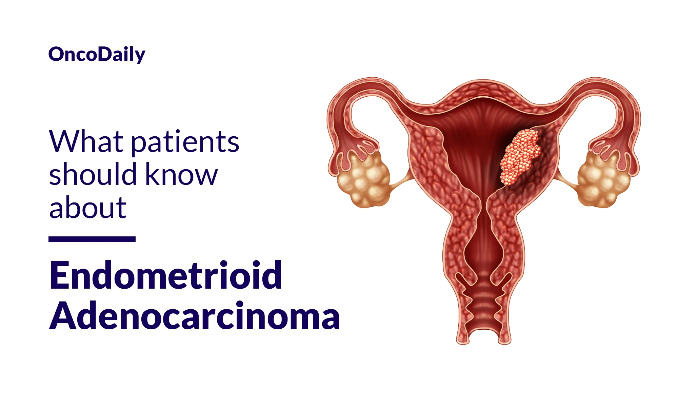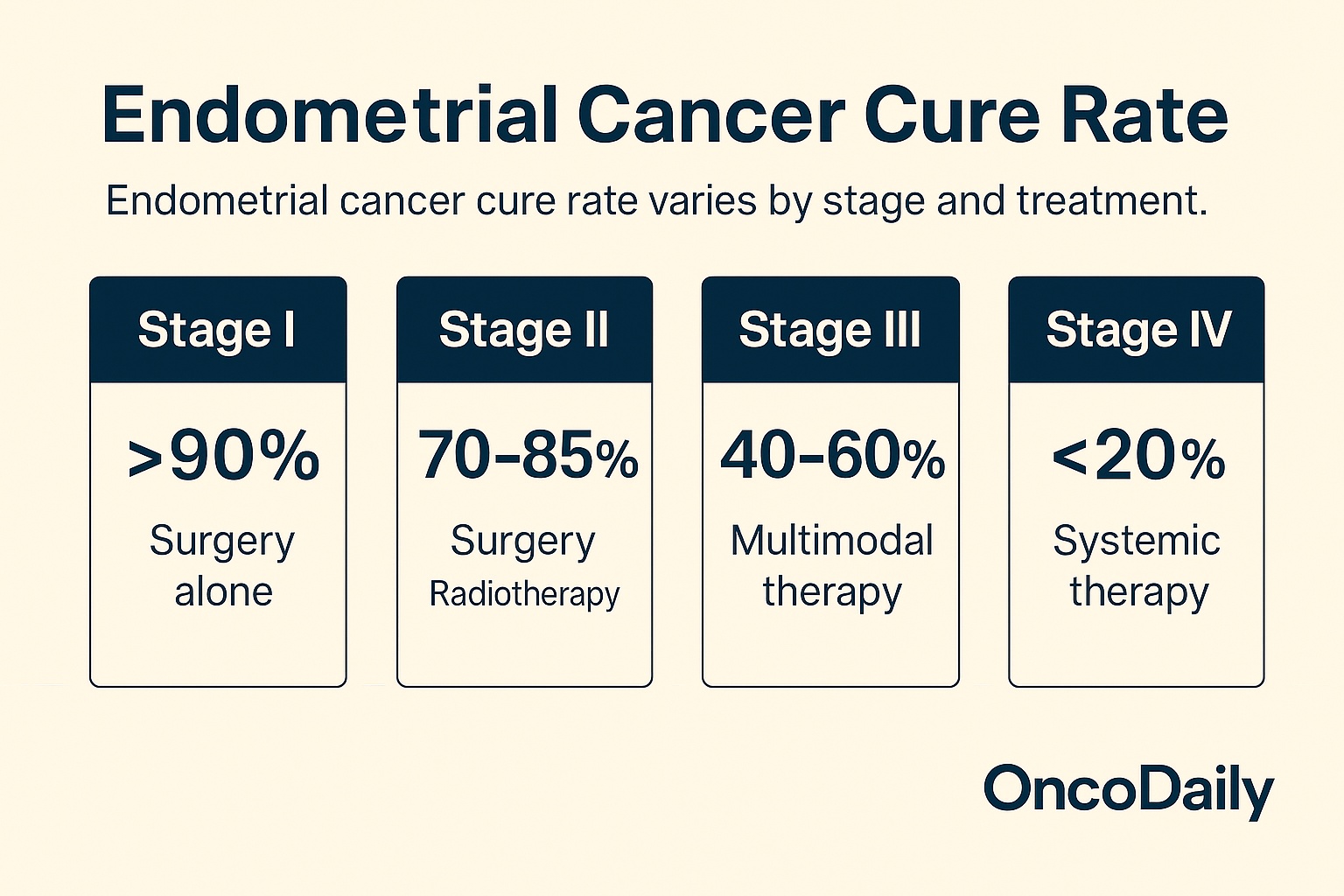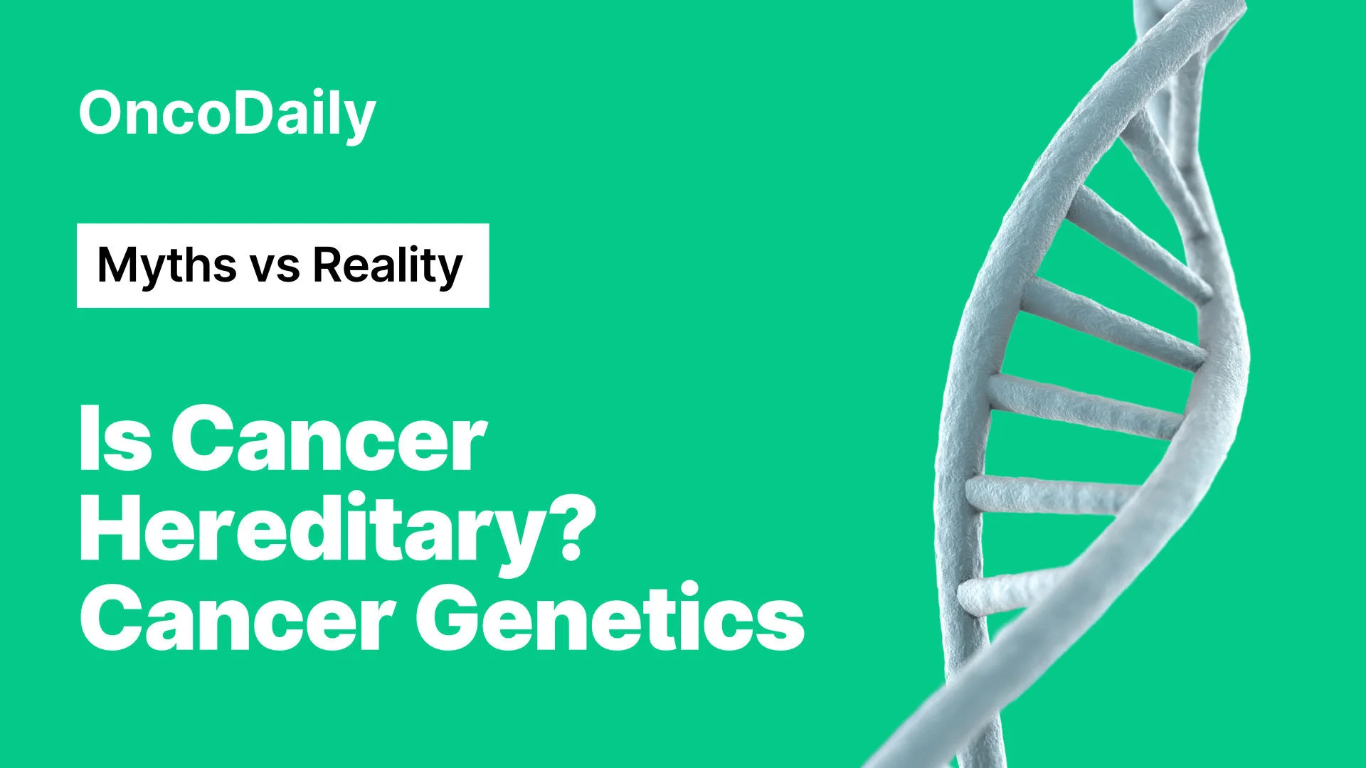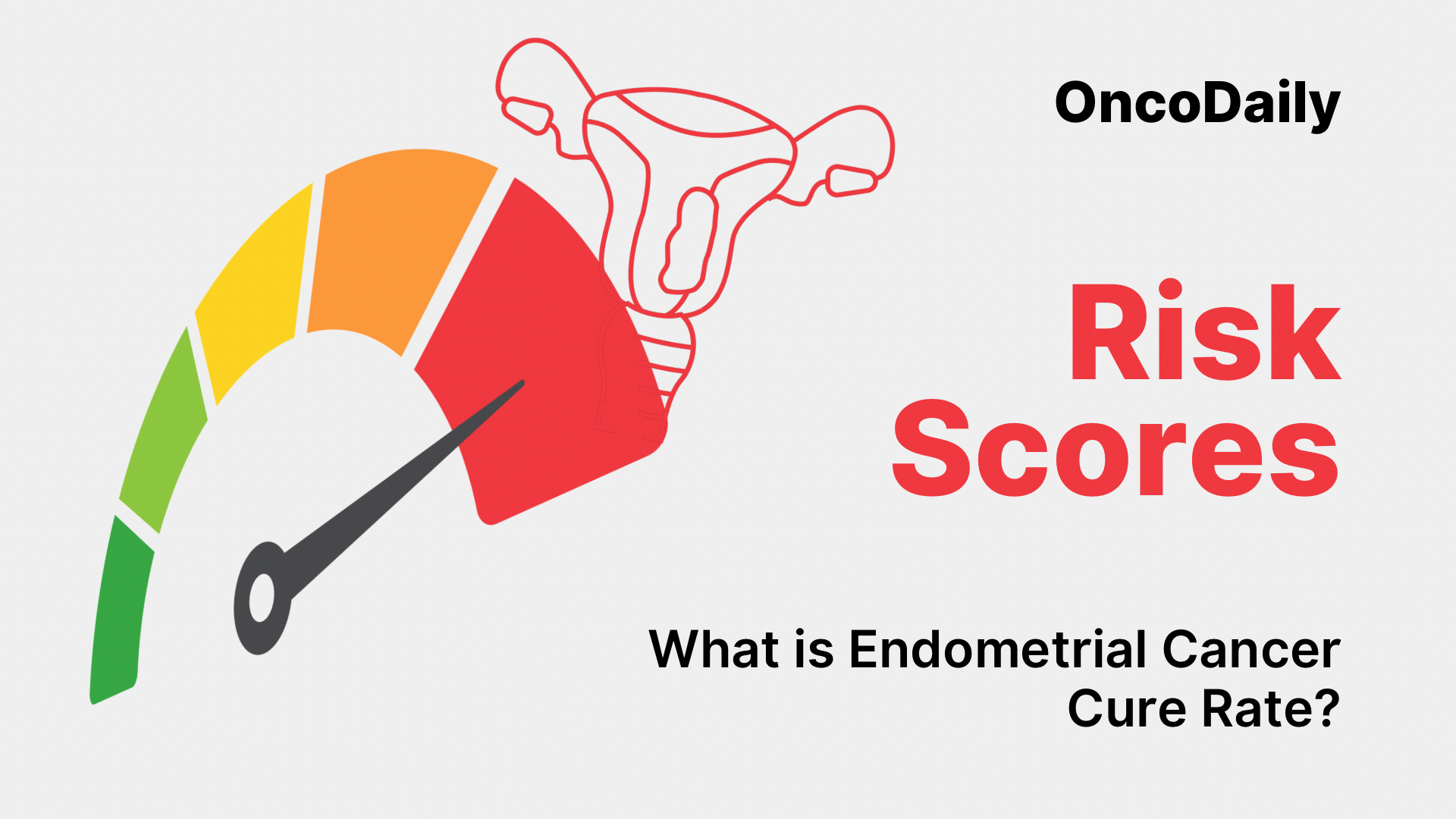Endometrial cancer, also known as uterine cancer, arises from the lining of the uterus (the endometrium). It is the most common gynecologic cancer in high-income countries and ranks among the top causes of cancer in women worldwide, with more than 417,000 new cases annually (Sung et al., 2021).
Most women are diagnosed early because abnormal uterine bleeding—especially postmenopausal bleeding—is a common early symptom. This early detection strongly influences the endometrial cancer cure rate, making it one of the most treatable solid tumors when managed promptly.

Read About Endometrial Cancer on OncoDaily
What Does Cure Mean in Endometrial Cancer?
A “cure” refers to complete elimination of cancer with no recurrence over long-term follow-up, typically defined as five years or more without disease. The ability to achieve a cure depends on how deeply the tumor invades the uterine wall, whether lymph nodes are affected, and whether the cancer has spread to distant organs.
Because endometrial cancer often presents early, the endometrial cancer cure rate is high overall, particularly for low-grade tumors confined to the uterus.
Endometrial Cancer Cure Rate by Stage
The stage of disease at diagnosis is the most important factor affecting the endometrial cancer cure rate.
Stage I: Cancer is confined to the uterus. Cure rates exceed 90–95%, especially for low-grade, endometrioid tumors treated with hysterectomy and adjuvant therapy only when indicated (Concin et al., 2021).
Stage II: The cancer has spread to the cervical stroma but remains within the uterus. Cure rates are approximately 70–85%, depending on tumor grade and lymphovascular invasion.
Stage III: Cancer spreads beyond the uterus to nearby structures or lymph nodes. With multimodal therapy—surgery, radiation, and chemotherapy—cure rates range from 40–60%.
Stage IV: Distant metastases are present. Cure is rare but possible in selected patients with limited disease, especially when tumors are hormone-receptor-positive or show actionable molecular features. Most patients are treated with systemic therapy, and long-term remission can occur.
These stage-based differences highlight why early recognition of symptoms is crucial for maximizing the endometrial cancer cure rate across all populations.

How Surgery Helps Achieve Cure
Surgery is the cornerstone of curative treatment. Most women undergo total hysterectomy with bilateral salpingo-oophorectomy (removal of the uterus, ovaries, and fallopian tubes).
The endometrial cancer cure rate is significantly influenced by complete surgical staging, which typically includes pelvic and para-aortic lymph node assessment. Minimally invasive surgery (laparoscopic or robotic) offers excellent outcomes with fewer complications, making it the preferred approach in most cases.
The Role of Radiation and Chemotherapy
Adjuvant radiation therapy helps reduce local recurrence in patients with intermediate or high-risk features. Vaginal brachytherapy or pelvic external-beam radiation may be used depending on tumor characteristics.
Chemotherapy—often carboplatin plus paclitaxel—is recommended for women with high-grade tumors, lymph node involvement, or aggressive histologic subtypes. These treatments help improve survival and support a higher endometrial cancer cure rate, especially in Stage II–III disease.
Molecular Subtypes and Cure Potential
Endometrial cancer is now understood as a molecularly diverse disease. The TCGA classification divides tumors into four subgroups with very different prognoses:
- POLE-ultramutated: Extremely favorable prognosis and very high cure rate, often >95%, even in higher-stage disease.
- MSI-high (MMR-deficient): Intermediate prognosis; highly responsive to immunotherapy.
- Copy-number low (endometrioid): Generally good prognosis.
- Copy-number high / p53-abnormal: Aggressive behavior and lower cure rates.
This molecular information allows oncologists to tailor treatment and better predict the endometrial cancer cure rate for each individual patient.
Cure Rate in Advanced and Recurrent Endometrial Cancer
For advanced or recurrent disease, cure becomes more challenging, but outcomes are improving. Immunotherapy has transformed treatment for MMR-deficient and MSI-high tumors, with drugs such as pembrolizumab, dostarlimab, and combination regimens offering durable responses.
HER2-positive uterine serous carcinoma may benefit from trastuzumab-based therapy, improving survival and contributing to higher long-term remission rates. Although cure is rare in metastatic settings, a small subset of patients achieve prolonged disease-free survival.
Hormone Therapy and Cure in Select Cases
Endometrial cancer is strongly hormone-driven. For early, low-grade tumors, hormone therapy (progestins, IUD-based therapy) can be used to preserve fertility. Cure is possible after subsequent surgery, and many women successfully conceive before completing treatment.
Hormone therapy is also effective in metastatic, hormone-receptor-positive disease, producing long-term control and contributing modestly to the overall endometrial cancer cure rate.
Early Detection and How It Affects Cure Rate
Endometrial cancer is often detected early due to symptoms such as abnormal uterine bleeding, making screening unnecessary for most women. However, individuals with hereditary syndromes such as Lynch syndrome require regular endometrial surveillance. Because early symptoms prompt evaluation, the endometrial cancer cure rate is significantly higher than many other cancers, especially when compared with ovarian or cervical cancer. Timely evaluation of any abnormal bleeding remains one of the most powerful tools for ensuring cure.

Read About Cancer Hereditary on OncoDaily
Living Beyond Endometrial Cancer
Survivors of endometrial cancer often live long, healthy lives. Follow-up care focuses on monitoring for recurrence, managing treatment side effects, and supporting long-term wellbeing. Quality of life after treatment is generally excellent, especially for those diagnosed in earlier stages.
Conclusion
The endometrial cancer cure rate is among the highest of all gynecologic cancers, especially when diagnosed early. Advances in minimally invasive surgery, radiation therapy, chemotherapy, hormone therapy, and immunotherapy continue to push outcomes higher.
Molecular profiling now allows clinicians to predict prognosis more accurately and tailor treatment in ways that maximize cure. With early recognition, prompt evaluation of symptoms, and personalized care, the majority of women diagnosed with endometrial cancer can look forward to long-term survival and excellent quality of life.
You Can Watch More on OncoDaily Youtube TV
Written by Armen Gevorgyan, MD
